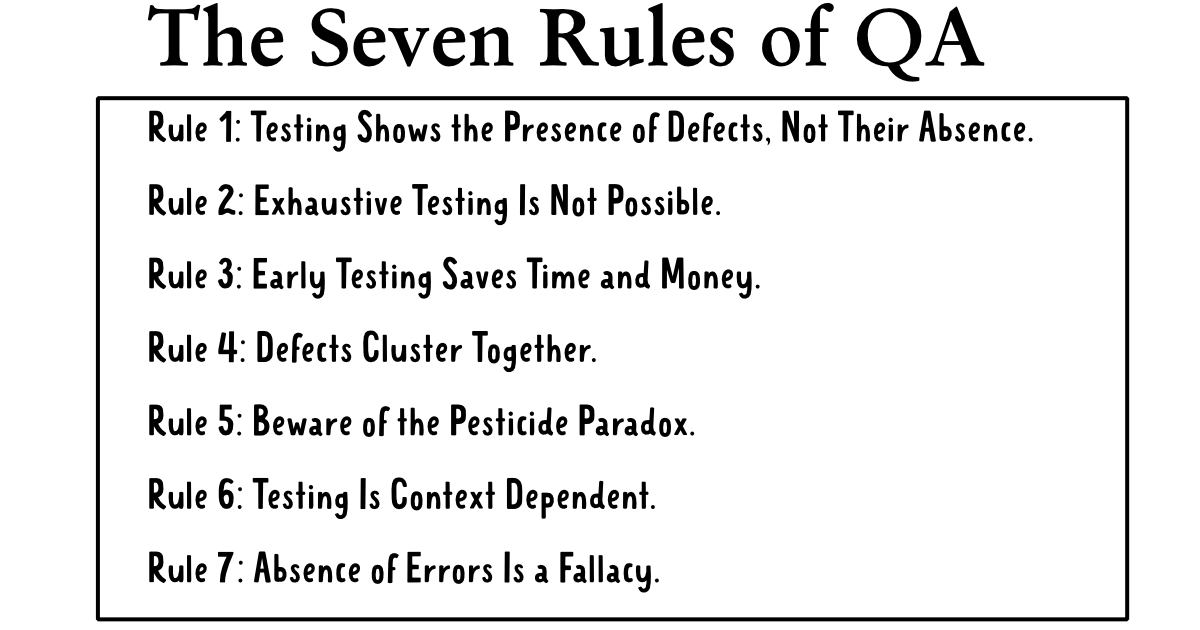The Seven Rules of QA
Know Some Common Rules of QA
Software testing is a complex and challenging process, but it is essential to ensuring the quality of software products. There are many different approaches to software testing, but there are also a few basic principles that all testers should follow. These principles are known as the Seven Rules of QA.

Rule 1: Testing shows the presence of defects, not their absence.
No matter how thorough the testing process is, it is impossible to guarantee that a software product is free of defects. Testing can only show the presence of defects, not their absence. This means that it is important to have a realistic expectation of what testing can achieve.
Rule 2: Exhaustive testing is not possible.
Even if it were possible to test every possible input and combination of inputs, there would still be no guarantee that the software would be free of defects. This is because software is complex and there are an infinite number of possible inputs.
Rule 3: Early testing saves time and money.
The earlier defects are found, the easier and less expensive they are to fix. This is why it is important to start testing as early as possible in the development process.
Rule 4: Defects cluster together.
Defects are not evenly distributed throughout a software product. Instead, they tend to cluster together in certain areas. This means that it is more efficient to focus testing on these areas.
Rule 5: Beware of the pesticide paradox.
The pesticide paradox is a phenomenon that occurs when new test cases are developed to find new defects, but these new test cases eventually become ineffective as the software is modified. This is because the developers learn how to avoid the defects that were found in the original test cases.
Rule 6: Testing is context dependent.
The effectiveness of testing depends on the context in which it is performed. For example, testing in a controlled environment is different from testing in a production environment.
Rule 7: Absence of errors is a fallacy.
Even if a software product is free of defects, it may not be usable or meet the needs of the users. This is why it is important to test for usability and user satisfaction as well as for defects.
The Seven Rules of QA is a valuable guide for all software testers. By following these principles, testers can improve the quality of software products and help to ensure that they meet the needs of users.
In addition to the Seven Rules of QA, there are a number of other factors that can contribute to the quality of software products. These factors include:
- The quality of the software development process
- The skills and experience of the software developers
- The use of automated testing tools
- The involvement of users in the testing process
By taking all of these factors into account, software developers and testers can create high-quality software products that meet the needs of users.
